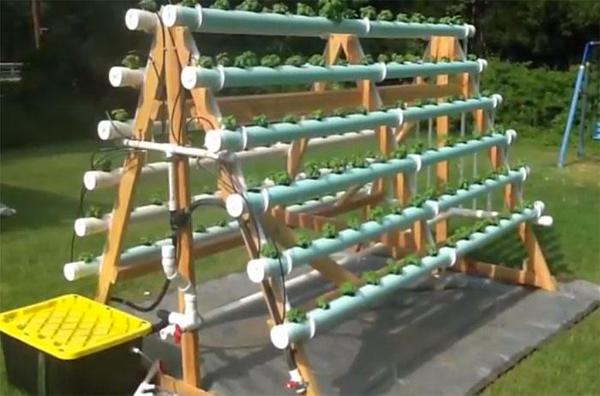DIY Hydroponic Systems for Home Gardeners

DIY Hydroponic Systems for Home Gardeners: A Thriving Guide
Ever dreamed of having a lush garden right in your home? Welcome to the world of DIY hydroponic systems for home gardeners. This isn’t your grandma’s garden; it’s a futuristic, soilless gardening method that’s perfect for urban farming and indoor plants. Let’s dive in!
What is Hydroponics?
Hydroponics is a method of growing plants without soil. Instead, plants are grown in a nutrient-rich water solution. It’s like giving your plants a superfood smoothie instead of a regular meal. This method is perfect for home hydroponics because it’s clean, efficient, and can be done in small spaces.
Why Choose DIY Hydroponic Systems?
DIY gardening with hydroponics has a ton of benefits. For starters, it’s eco-friendly. You use less water and no pesticides. Plus, plants grow faster and healthier because they get all the nutrients they need directly. It’s like giving your plants a VIP pass to the nutrient buffet.
Types of DIY Hydroponic Systems
There are several types of hydroponic systems you can build at home. Let’s explore a few:
Wick System
This is the simplest and most passive system. A wick transfers water and nutrients from a reservoir to the growing medium. It’s like a plant drinking through a straw.
Deep Water Culture (DWC)
In a DWC system, plants are suspended in a nutrient solution. An air pump oxygenates the water, keeping the roots healthy. Think of it as a plant spa where they get to soak in a nutrient-rich bath.
Nutrient Film Technique (NFT)
In an NFT system, a thin film of nutrient-rich water constantly flows over the plant roots. It’s like giving your plants a continuous shower of nutrients.
Building Your Own DIY Hydroponic System
Ready to get your hands dirty (or not, since there’s no soil)? Here’s a step-by-step guide to building a simple DWC system:
Gather Materials
- A large bucket or container
- An air pump and air stone
- Net pots
- Growing medium (like clay pebbles)
- Nutrient solution
- Plants or seeds
Set Up the System
- Fill the bucket with the nutrient solution.
- Place the air stone at the bottom of the bucket and connect it to the air pump.
- Fill the net pots with the growing medium and place your plants or seeds in them.
- Suspend the net pots in the bucket so the roots are submerged in the nutrient solution.
Maintain the System
- Check the pH and nutrient levels regularly.
- Change the nutrient solution every two weeks.
- Keep the air pump running to ensure the roots get enough oxygen.
Choosing the Right Plants for Hydroponics
Not all plants are created equal when it comes to hydroponics. Leafy greens like lettuce, spinach, and herbs thrive in hydroponic systems. Fruiting plants like tomatoes and peppers can also do well, but they require more care. Avoid root vegetables like carrots and potatoes, as they need soil to grow properly.
Tips for Successful Home Hydroponics
- Lighting: Indoor plants need plenty of light. Consider using grow lights to ensure your plants get enough.
- Temperature: Keep the temperature between 65-80°F (18-27°C) for optimal growth.
- pH Levels: Maintain a pH level between 5.5 and 6.5. This ensures your plants can absorb the nutrients effectively.
Common Mistakes to Avoid
- Overfeeding: Too many nutrients can harm your plants. Stick to the recommended dosage.
- Neglecting pH Levels: Ignoring the pH can lead to nutrient deficiencies.
- Poor Ventilation: Plants need fresh air to thrive. Ensure your setup has good airflow.
The Future of Urban Farming
Urban farming is on the rise, and hydroponics is leading the way. It’s a sustainable and efficient method that allows city dwellers to grow their own fresh produce. Imagine having a salad garden right in your apartment. That’s the power of hydroponics.
Resources for DIY Gardeners
Looking for more information? Check out www.hydroponics.net for expert tips, guides, and community support. It’s like having a personal hydroponics coach.
Conclusion
DIY hydroponic systems for home gardeners are a game-changer. They allow you to grow fresh, healthy plants right in your home, without the mess of soil. Whether you’re a seasoned gardener or a beginner, hydroponics offers a fun and rewarding way to grow your own food. So, why not give it a try? Your green thumb is waiting!
FAQs
What are the best plants for hydroponics?
- Leafy greens like lettuce, spinach, and herbs are great for hydroponics. Fruiting plants like tomatoes and peppers can also do well with proper care.
How often should I change the nutrient solution?
- It’s generally recommended to change the nutrient solution every two weeks. However, this can vary depending on the type of system and the plants you’re growing.
Can I grow hydroponic plants outdoors?
- Yes, you can grow hydroponic plants outdoors. Just make sure to protect your system from pests and extreme weather conditions.
What is the best growing medium for hydroponics?
- Clay pebbles, rockwool, and coconut coir are popular choices for growing mediums in hydroponic systems. Each has its own advantages, so choose based on your specific needs.
How do I know if my hydroponic system is working?
- Healthy plant growth is the best indicator. Look for vibrant leaves, strong stems, and a robust root system. Regularly checking pH and nutrient levels can also help ensure your system is functioning properly.
0 Response to " DIY Hydroponic Systems for Home Gardeners"
Post a Comment